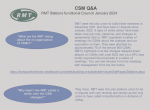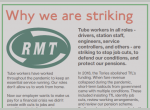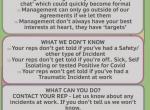Similar topics:
Attached documents
This document is attached as a PDF. Read the text below.
Introduction
Pandemic influenza is very different from, and far more serious than, the usual seasonal influenza outbreaks that happen every year. A pandemic is an outbreak that may affect hundreds of millions of people worldwide, leading to a large proportion of them becoming ill. Pandemic flu occurs when a new influenza virus emerges that is very different from ordinary seasonal flu and, because it is new, people have very little or no immunity to it. There are normally around two to three such pandemics every century. The most recent pandemic was in 1968 and affected mainly the young and the elderly. An earlier outbreak in 1918 caused an estimated 20-40 million deaths worldwide, most of which occurred among people aged between 20 and 45.
Pandemic influenza is likely to develop through genes from a number of human and animal flu viruses joining together to form a new strain of virus. Most animal flu viruses such as avian and swine flu can, in some circumstances, be transmitted to humans. Some of these are harmless to humans while others can be fatal. However, because they are not passed from human to human they are not spread as quickly as human influenza viruses and so are much easier to contain. If however they develop in a way that made it easier to be passed from person to person a pandemic is more likely.
Once a virus is very easily passed from person to person then it is likely to spread very quickly. It can be transmitted through touching anything that is contaminated with the virus, or from casual contact between people. Depending on the type of virus illness develops anything between two days to a week after infection.
In April 2009 a new strain of influenza broke out in Mexico and by the middle of June, the World Health Organisation had declared a world-wide pandemic. The Mexican outbreak appears to be a new version of the H1N1 strain of influenza type A. H1N1 is the same strain which causes seasonal outbreaks of flu in humans on a regular basis. But this latest version of H1N1 is different: it contains genetic material that is typically found in strains of the virus that affect humans, birds and swine.
Influenza pandemics occur either in a single wave or several waves that can be weeks, or even months, apart. A pandemic can develop very quickly. In this case the virus is continuing to spread but at a lower rate than first feared. This however may be because the outbreak first appeared in late spring rather than the autumn which is the beginning of the “flu season” in the UK. The current rate of spread is therefore not an indication of what might happen later in the year.
The fatality rate for previous pandemics has varied from 0.2% to 2% with between 25% and 50% of the population being affected during the outbreak. The government’s ‘‘worst case’’ guess is that the 50% of the population could become ill over a period of 3-6 months with a maximum of 750,000 deaths as a result. However this is the worst of the likely outcomes and, in reality any pandemic would probably be much less severe. The present flu virus seems to be “milder” than some previous ones but that could change as it mutates. That is why the TUC supports the government view that contingency plans should be put in place to ensure that its effects are minimised as far as possible. That means that plans must be flexible enough to cover all possible eventualities.
Why pandemic influenza is an issue for trade unions
The outbreak of an influenza pandemic is more than just a public health issue. It will have a major effect in the workplace. Large numbers of people are likely to be absent at any one time. In the event of schools closing (which is a high possibility) many workers with children will find it impossible to go to work. Likewise, those who have partners or dependents who become ill may also not come to work. This would have a major impact on all aspects of health and social care, as well as on the economy as whole.
The TUC believes that trade unions and employers, working together, can make a significant difference in ensuring that the effects of the pandemic are minimised, that the workforce are educated and informed on transmission issues, and in helping ensure there is no panic.
Unions will also have a major part to play in ensuring that those workers who are ill as a result of infection stay at home and do not come in to work either through misplaced loyalty or employer pressure.
In addition, it is important that the effect of any pandemic does not hit those who are more vulnerable hardest, such as the low paid, those who don’t have permanent employment or sick pay schemes and those who have dependents.
The government plan
The government has produced a detailed plan for dealing with the influenza pandemic. It outlines the roles of various government and public bodies as well as the contribution of the voluntary sector and community networks. Much of the plan has been piloted in special government exercises or simulations, but the real effect will not be known until the pandemic develops further. It is only then that we will be able to assess the likely number of people who will be affected, the mortality rate, the effect on emergency services and the economy, and how people will react.
Clearly this will be much more than just a health emergency. Although priority must be given to ensuring that medical treatment is made available as quickly as possible to as many people as possible, efforts must also be made to ensure maintenance of essential services and continuity of basic functions such as transport, energy, finance, law and order, and food supply.
The government will have to make very difficult decisions on matters such as whether or not to close schools and group childcare activities. The decision on this will have a major impact on the ability of not only industry, but also the health service and social services to function.
Decisions will also have to be made on access to either vaccinations when they become available, or anti viral medicines. It is unlikely that current flu vaccines will be effective against any new strain and a new vaccine is likely to take several months to develop. The government maintains stocks of sufficient anti viral medicines to cover over 50% of the population. Given that anti-virals are most effective in relieving the symptoms of those infected and are intended to be given to those newly infected, and not as a preventative measure this is likely to be sufficient, although it is not known whether the anti-virals stocked will be effective against the particular strain of influenza which appears.
In addition to the national framework for responding to a pandemic, the government has also produced an ethical framework against which decisions on such issues should be made.
Why you must act now
It is important that employers do not wait until the pandemic develops further before considering what measures they need to take. At the same time, it is also important that people do not take panic measures. Although the government response is based on the ‘‘worst case scenario’’, with the closure of schools, major problems with transport and distribution, and very high levels of sickness, it will be impossible to predict the actual full effect of a pandemic until the beginnings of an outbreak. That is why forward planning must be flexible, practical, and based on realistic assessments of likely risk. This does not necessarily mean starting from scratch. Many employers will already have general plans for a major incident so planning for an influenza pandemic can often be incorporated into general emergency planning.
As media attention to the risk of pandemic influenza increases, employers will become susceptible to approaches from unscrupulous companies who will attempt to sell them anti viral medicine or protective equipment, much of which may have no practical effect or even prove counterproductive.
What unions can do
Trade unions should ensure that their employer has in place either a separate policy for dealing with pandemic influenza, or a general policy covering major disasters or incidents that also covers major public health incidents such as pandemic influenza. It should not be left to employers alone to decide on what is an appropriate response. Unions must also be involved, as any effective policy must have the confidence of the whole workforce. When considering your employer’s response to pandemic influenza the following are some of the areas that you may wish to address.
Are the employer’s proposals reasonable and practical?
Many employers will have either overly elaborate plans or will simply add ‘‘pandemic influenza’’ onto an existing emergency plan without making any real changes. To be of any use the employer must actually go through the process of considering what effect all the different possible scenarios would have on their staff and how they operate, right up to the worst likely situation of up to 50% of the workforce being off, disruption to transport, and the disruptions to other services that could also arise (such as banking, the internet, supplies etc.)
Among the things that unions should look at are: • Do the employer’s plans underestimate the possible absence rate in the event of a major pandemic, as a consequence of employee infection and/or if the schools close.? • Have they looked at issues around supply of materials or services? • Have all departments been involved in drawing up the plan? • Does it treat all staff equally? • Have they considered the operation of functions such as cleaning and catering, if these are not done ‘‘in-house’’?
Dealing with sickness absence
Some employers are planning for absenteeism rates of up to 50%. This is on the basis that it will not only be those who are ill that are unable to come into work, but also those looking after family members who are ill or those with children in the event of schools being closed. In addition, in the event of a severe pandemic, some staff will be afraid to come into work for fear of contracting the virus. There may also be difficulties with public transport.
While it is impossible to predict the likely rate of absenteeism during a pandemic, trade unions should ensure that employers are committed to equal treatment of all those who are absent. Those who are unable to travel because there is no public transport, or those who have got dependents who they cannot leave, should be treated no differently from those who are themselves ill. It is important that they are not disadvantaged in terms of issues such as pay, compared to those staff who are able to work from home.
Many employers will simply say that they will look at such cases sympathetically but most workers, especially those on low pay, will want to know in advance where they stand, so policies should be agreed beforehand.
Trades unionists will have to ensure that employers do not encourage staff to come in when they are ill and may themselves have to try to ensure that staff do not attempt to come to work through misguided loyalty to their employer or their client or their work colleagues. It is important that all staff who are ill remain at home until fully recovered. The HSE and government advice is clear. “Advise your staff to stay at home if they are sick with flu-like symptoms and send home any employees who are displaying flu-like signs/symptoms.”
It is likely that increased sickness absence may put pressure on other employees to work longer hours to cover for those who are off. Employers will still be covered by the Working Time Regulations and it will not help if those employees who remain at work find their health being undermined by excessive pressure.
In the event of a pandemic breaking out, unions will want to get involved in discussions with their employers over issues such as staff taking leave.
Does the employer’s plan include remote working?
One of the obvious responses employers are likely to make to a major health crisis is to ensure that staff are given the opportunity of working from home. This should generally be encouraged, but it means that there must be arrangements made to ensure that systems are in place to enable them to do so. That means looking at issues around IT, including broadband capacity and the management and coordination of work. Another issue for trade unions is the fact that many workers, such as cleaners, are simply not able to work from home. The TUC is concerned that this may mean that there will be two tiers of staff with those unable to work from home, but who still have domestic responsibilities, being treated differently from those who can work from home if they need to care for a dependant and remote working arrangements should ensure that no staff are disadvantaged through not being able to work at home because of the nature of their job.
Personal protection
Some employers have decided that one of the steps they should take to prepare for a pandemic influenza outbreak is to keep stockpiles of gloves, masks, and hand sanitising liquid. The TUC does not recommend the use of gloves or masks in most workplaces for a variety of reasons. Gloves do not prevent infection as people will still touch their skin with the gloves and then touch another surface or person.
Latex gloves carry significant risks of producing an allergic reaction and were they to be used during an outbreak there would be problems of disposal.
There is also no evidence that, outside health care situations, the general use of facemasks has any actual effect on protecting people or reducing the speed of a pandemic’s development. Although the evidence from the recent SARS outbreak suggests that people will seek to use them regardless of any advice on their effectiveness, they are not generally recommended by health professionals. In addition, there is evidence that some people think that if they wear a mask, even if they are ill, they can still come to work and this could actually lead to increased risk. This is not however the case in health care and where there is likely to be close or frequent contact with symptomatic patients and the use of gloves and masks may be required.
In May 2009 the HSE issued advice that stated “it should not be necessary for workers to wear masks routinely when in contact with the general public. However, there may be some situations when it will be advisable for a worker to wear a mask. Such a situation will depend on the nature of the work and where it is to be carried out.
Employers should carry out a risk assessment and, amongst other things, gauge:
• If workers are likely to encounter members of the public who are displaying symptoms, for example, in a healthcare setting it is highly likely that contact with the public (patients) will include persons who have symptoms of influenza;
• Where contact with people displaying symptoms is likely, whether any measures can be taken to minimise contact;
• The duration and frequency of contact with members of the public.”
The use of hand sanitising liquid is slightly different. It may be that some public organisations will make it available at key entry areas or where there is likely to be contact between people. Public transport systems may use some form of sanitising spray in the event of an outbreak. However, care should be taken to ensure that any products used are fully safe to use and are not likely to exceed their sell-by date within the next few years if they are buying future supplies for storing..
Many employers will also plan to step up their cleaning regimes in the event of an outbreak. However, they should bear in mind that it is likely that the number of cleaning staff may be reduced as a result of illness. Damp rather than dry dusting should be carried out during a pandemic to avoid the generation of dust and it is recommended that the cleaning of surfaces be carried out using a freshly prepared solution of detergent and hot water followed, where necessary, by a chlorine based disinfectant solution.
There may also be proposals to switch off air conditioning systems in large open plan offices or workshops as a way of preventing the virus spreading. The HSE do not recommend this. They state, ‘‘the overall effect would be to create more static air which may result in discomfort and ill health effects. The main advantage of air conditioning is that it has a dilution effect on stale/contaminated air and also provides a more comfortable environment overall. Therefore continue running any air conditioning system already provided for the workspace.’’
The main type of personal protection that employers are considering is the pre-purchase of anti viral medicines. A number of large employers have already secured sufficient supplies for all their staff and, in some cases, are giving staff the opportunity to purchase supplies for family members in the event of an outbreak.
The TUC has grave concerns over this. It believes that, in the event of an outbreak, the limited stocks of anti-virals that are available should be distributed on the basis of need and effectiveness, and in accordance with an ethical framework. While there is a case for those within the health and social care field and emergency services to be offered treatment as a priority, large corporations keeping supplies simply in order to keep their staff at work could have serious implications for other sectors. In addition the strategy is unlikely to be effective as employers would have to continue giving the medicine to individuals throughout the outbreak. This is not what anti-virals are intended for, nor is it the best use of stocks during a pandemic.
The Department of Health also does not recommend the stockpiling of private supplies of anti-virals by employers, while the employer’s organisation, the EEF have advised their members “There are specific arrangements for healthcare professionals, but the advice for the vast majority of companies is not to buy stocks of Tamiflu or Relenza. Both drugs are antiretrovirals, not vaccines. They are only effective on people who are in the early stages of the virus, so you could give them to all of your staff today but by next week they would be unprotected. Realistically the H1N1 strain is going to be around for months, not days. In any case, the UK has 34 million doses of the drugs – more than enough to go around; anyone who needs treatment will get it promptly simply by calling their GP or NHS direct. Bear in mind that Tamiflu and Relenza are prescription drugs, it is therefore illegal for anyone who is not medically qualified to give them to another person.”
Personal hygiene
This is one area which employers can start taking action on straight away. One of the ways in which any virus is likely to spread quickly is through hand to face contact, coughing and sneezing. Employers and union activists can download material from the Department of Health in order to educate people on the importance of hand-washing and the use of handkerchiefs now, rather than waiting for a pandemic to break out.
Many people will simply think that the best way of preventing the spread of the virus is to stay at home while showing symptoms. While this is true, many people can be infectious without showing symptoms. This is why unions should support general hygiene campaigns, as a way of slowing the spread of any pandemic should it develop.
Education and Training
Safety representatives are urged to ensure that their employer notifies all their staff of what arrangements they have made to prepare for an outbreak of pandemic flu, including what role they expect individual staff to take. Staff should be given information about pandemic flu and the need for personal hygiene. This should be done in a non-patronising way and with the full involvement of stewards or safety representatives.
Further information
The HSE has a web page on pandemic influenza which includes advice on what to do now a pandemic has been declared: http://www.hse.gov.uk/biosafety/diseases/pandemic.htm
The Department of Health pandemic influenza website, which includes the current contingency plan is at: http://www.dh.gov.uk/en/PandemicFlu/index.htm
Advice is also available on the Health Protection Agency Website: http://www.hpa.org.uk/infections/topics_az/influenza/pandemic/default.htm
The Faculty of Occupational Medicine advice is at http://www.facoccmed.ac.uk/library/docs/panflu09.pdf
- 4846 reads






